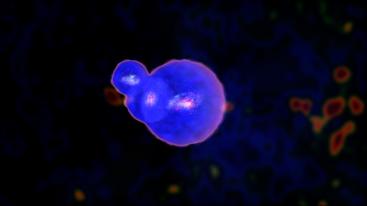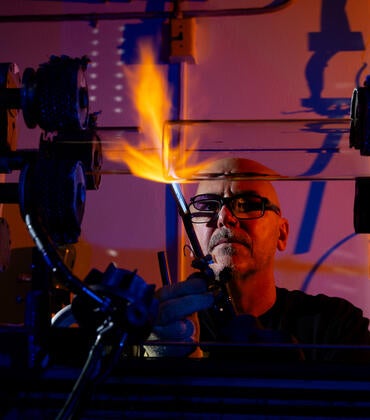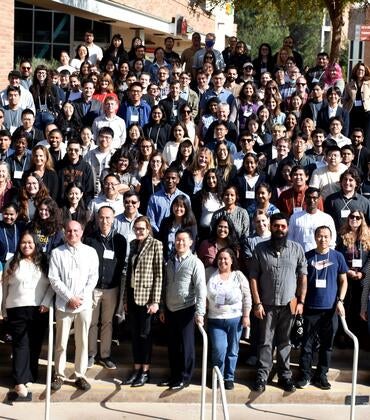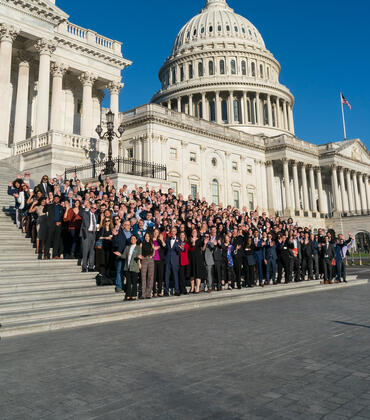Bahram Mobasher, a professor of observational astronomy at UC Riverside, is a member of an international team of astronomers that found the farthest galaxy group identified to date. Called EGS77, the group of three galaxies dates to a time when the universe was only 680 million years old.
While more distant galaxies have been observed, EGS77 is the farthest galaxy group to date showing the specific wavelengths of far-ultraviolet light revealed by reionization, the era when light from the first stars changed the nature of hydrogen throughout the universe.
“Our universe went through a period of dark ages when it was 380,000 years old that lasted for 600
million years,” Mobasher said. “During this time clouds of molecular hydrogen condensed and formed the very first generation of stars. These stars were very bright and emitted high-energy ultra-violet radiation, which resulted in ionizing the hydrogen atoms around them.”
The nature, space density, and concentration of the objects responsible for the ionization of the universe are being intensively studied today.
“What we found was the first evidence of a group of galaxies when the universe came out of this period of dark ages — when it was one billion years old,” Mobasher said.
The findings were presented on Jan. 5 at the 235th meeting of the American Astronomical Society by James Rhoads at NASA’s Goddard Space Flight Center in Greenbelt, Maryland. He explained that the hydrogen atoms that filled the early universe attenuated ultraviolet light, which blocked astronomers’ view of early galaxies.
“EGS77 is the first galaxy group caught in the act of clearing out this cosmic fog,” said Rhoads, who served as principal investigator of the Cosmic Deep And Wide Narrowband, or Cosmic DAWN, survey. EGS77 was discovered as part of this survey.
Mobasher, a co-founder of the DAWN survey with Rhoads and Sangeeta Malhotra of the Goddard Space Flight Center, was involved in planning and interpreting spectroscopic observations.
A paper describing the findings has been submitted to The Astrophysical Journal.
For more information, including photos and videos, please visit: https://svs.gsfc.nasa.gov/13511






